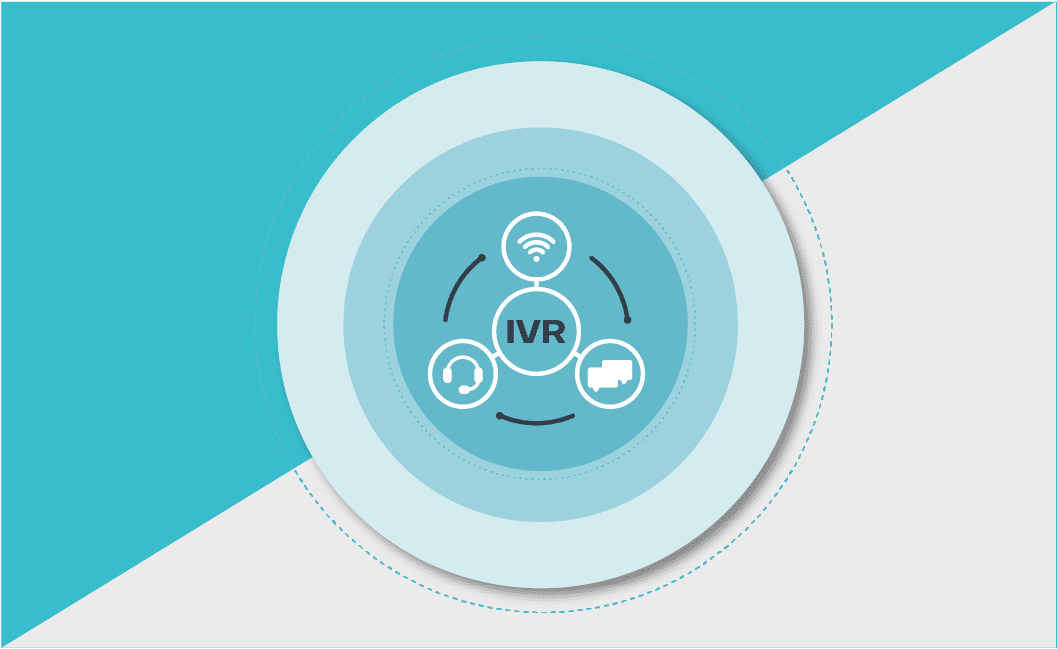A good customer experience leads 89% of customers to buy from you again. But an average or bad experience can seriously harm your reputation and revenue goals. Yikes. Combat being average by improving your IVR call center experience.
Consider this: strong IVR systems have the highest FCR rate among all contact channels. And yet, most callers have an ‘average’ first impression when using IVRs. What a waste!
Instead, an IVR call center that operates at its best offers better self-service, convenience, and a boost in customer and agent satisfaction.
Want a more in-depth look at IVR phone systems? Check out our blog post.
What Are the Benefits of an IVR System in Your Call Center?
From alleviating pressure from your agents’ day to boosting customer satisfaction, an IVR system offers a variety of benefits for your entire call center. Let’s dive in.
An IVR Call Center Benefits Your Agents By:
- Reducing workload. IVR systems can handle routine inquiries and tasks for your agents. This frees agents to focus on calls with more complex issues and questions, reducing workloads and stress.
- Improving efficiency. An IVR call center automates processes such as call routing and information gathering. This means your IVR system can help agents handle calls more efficiently. The result? Shorter calls and higher productivity.
- Gathering context. Because IVRs can gather relevant customer information, agents receive customer data and context before they answer the call. This improves the quality of service and enables agents to be more prepared when they talk with customers.
An IVR Call Center Benefits Your Customers By:
- Offering 24/7 assistance. IVR systems enable businesses to provide round-the-clock support. This gives customers access to information and lets them perform basic tasks at any time of the day (or night).
- Making service faster. IVR systems can route callers to the appropriate department or provide self-service options. With this, wait times drop and FCR improves.
- Providing convenience. IVR systems offer self-service options for common inquiries. Customers can check account balances, make payments, or get basic questions answered.
15 Best Practices to Supercharge Your IVR Navigation
Now it’s time to get the most bang for your buck. Here are 15 best practices to streamline your IVR call center.
1. Give Customers the Option to Speak to a Human
Some customers just want to talk to a person — that’s OK! Give customers the option to connect with a live agent. This ensures personalized assistance for complex issues and enhances satisfaction levels and loyalty.
2. Test Your IVR
Like any tech, an IVR call center system needs regular testing and monitoring to ensure it’s operating at its best. Test your IVR regularly to identify and rectify glitches or inefficiencies to offer customers seamless navigation.
3. Use a Clear and Concise Human Voice
Customers don’t like feeling like they’re talking to a robot. Your IVR’s voice should be warm, natural, professional, and understandable to guide customers through the menu options with clarity and confidence.
4. Keep Things Short and Sweet
Complex menus and pathways only frustrate customers. Keep your IVR prompts concise and intuitive to minimize the number of steps required to resolve an issue.
5. Offer Callbacks
Give your customers a chance to request a return call from an agent at their convenience. Doing so eliminates long hold times and enhances the overall customer experience.
6. Update Your IVR
What’s the point of an IVR if it’s not accurate? Keep your IVR system up-to-date with the latest information. Highlight new products, services, and promotions while ensuring correct and relevant service.
7. Offer Different Languages
Cater to a diverse customer base by providing IVR options in several languages. This promotes seamless communication and accessibility for all customers.
8. Don’t Make Customers Repeat Information
For a full omnichannel experience, your customers should only have to provide information once. Transfer the caller’s information with them when routing callers through your IVR to avoid wasting their time and patience.
9. Answer FAQs
Anticipate customer questions in your IVR. Incorporate frequently asked questions into your IVR menus, such as the steps to complete a password reset. This provides immediate answers and reduces the need for agent intervention.
10. Add Speech Recognition
Implement speech recognition technology to let customers interact with the IVR using natural language. This enhances convenience for your customers.
11. Add AI/Automation
Integrate AI and automation into your IVR to personalize interactions, anticipate customer needs, and streamline processes for customers and agents.
12. Personalize the IVR
Use the data collected from customers to personalize IVR interactions. You can address customers by name or offer tailored recommendations based on their previous interactions.
13. Integrate with Your CRM
Integrating your IVR call center with your CRM gives you a comprehensive view of customer histories and preferences. This allows you to offer personalized service and gives greater context for customer interactions.
14. Link to Specific Departments
Route calls to the appropriate department or agent based on the nature of the call. Cut down on transfers and wait times and boost your resolution time.
15. Offer Wait Times
Be honest with customers and inform them of accurate wait times. Make sure to offer alternative options, like callbacks or self-service options, to manage expectations and reduce frustration.
Schedule a demo with one of our consultants to see our advanced IVR in action.








